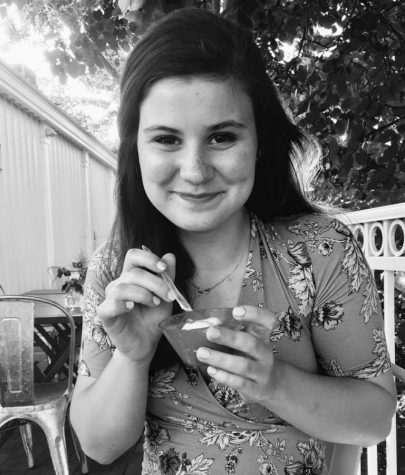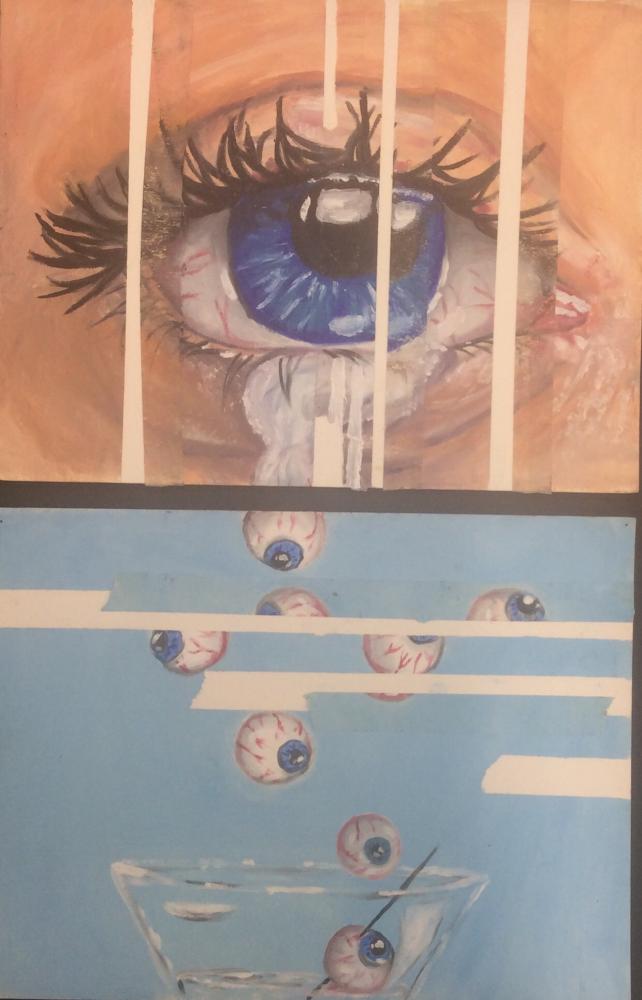An Inside Look into Glenbard West’s Most Challenging Art Classes
Glenbard West’s award-winning Art Department inspires many through unique and critical classes in some of the most beautiful classrooms.
The school offers a series of art classes at various levels. Most students begin freshman or sophomore year in beginning art classes, such as Drawing or Graphic Design 1, and then are eligible to advance to more challenging classes: such as AP Studio 2-D or 3-D, AP Art History, Sculpture, Graphic Design 2, and so on.
In these more challenging art classes, students must face the challenge of not only having their work appeal to the visual eye but also to an AP rubric.
Colleen Doyle, AP art teacher at Glenbard West, explains that, unlike most AP classes there is no test at the end of the year but rather a submission process. AP Studio students send in various pieces from the year to be critiqued by AP graders in order to earn their scores.
To prepare for this challenging assessment, AP students have a “crit workshop” every Monday where they have to present their work to the class, explain it, and listen to comments and suggestions from their peers.
“In this class we go through a rubric that basically breaks down what makes an art piece good,” clarifies award-winning art student and senior, Eileen Billings.
A great piece would include “a subject matter usually intriguing but also done in an unique way like on unconventional material or just really well rendered. There is a lot of aspects to making great art. There isn’t just one way to say this is good this is bad,” shares senior Bryn Lily. With this complex task, even the most talented art student still finds it hard to step outside the box.
“In a perfect world, I wouldn’t use rubric,” shares Mrs. Doyle. She explains that a large part of grading art is looking collectively at a student’s pieces and making sure they are challenging themselves by stepping outside their comfort zone. She continues, “A kid out there just said to me ‘oh my god I’m so scared about this’ and I love that because that means that they’re trying something new.”
To some, the critical grading dynamic of West’s advanced art classes may seem intimidating, students explain that the classes themselves are comfortable and inviting due to the family-like composure. The atmosphere is mostly due to, according to Bryn Lily, the “mother-like figure” of Mrs. Doyle. She succeeds in creating such a close bond with her students. Mrs. Doyle says she “takes the time to have conversations with them and then sees those conversations reflected in their art.”
Junior Sebastian Pratt describes that he has been taking progressively more difficult art classes every year and has liked them more every year. Mrs. Doyle explains that this is a common trend. Many of the students come into West and take a basic art class freshman year, fall in love with it, and become frequent art students. Students fall in love with the inviting atmosphere and accepting environment, as Mrs. Doyle explains, “This becomes more like a family setting, a comfortable place to be, a safe place to be.”
“Everyone should take art,” states Mrs. Doyle, “because not only is it a reprise from your school day, it’s a way to learn not only how to draw but have a creative thought process that figures into all of your classes and anyone can learn to draw if they are taught.”

Molly has been writing for the newspaper for her whole time at West and Is now a columnist for the Glenbard! She enjoys writing about the history of the...





